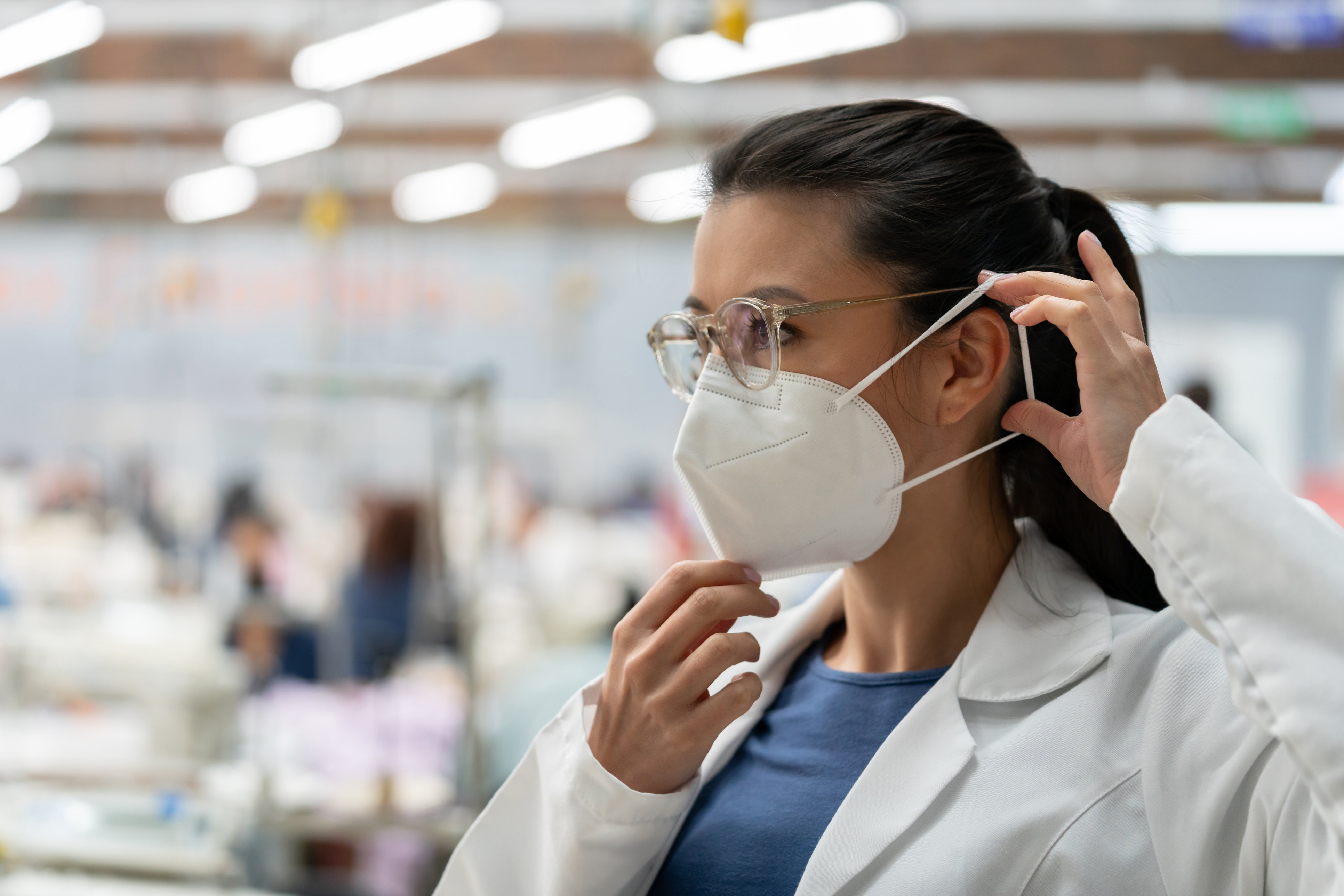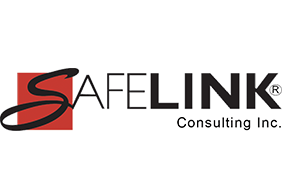OSHA's 29 CFR 1910.134 applies to having a mandatory or a voluntary respiratory protection program. Employers must determine if either of those programs need to be a part of their health and safety program. What are the components of respiratory protection?
OSHA begins this Standard by explaining: "In the control of those occupational diseases caused by breathing air contaminated with harmful dusts, fogs, fumes, mists, gases, smokes, sprays, or vapors, the primary objective shall be to prevent atmospheric contamination. This shall be accomplished as far as feasible by accepted engineering control measures (for example, enclosure or confinement of the operation, general and local ventilation, and substitution of less toxic materials). When effective engineering controls are not feasible, or while they are being instituted, appropriate respirators shall be used pursuant to this section."
If this type of hazard exists, the employer must provide the proper respiratory protection until it is proven through various means such as air sampling that OSHA's Permissible Exposure Level (PEL) is not exceeded in the performance of a particular task. If testing proves that the PEL is below the OSHA PEL and the employer still requires a respirator to be worn in a particular area, any respirator use (including an N-95 dust mask) would not be considered voluntary. That would then require a written respirator protection program meeting the requirements of 29 CFR 1910.134. Watch for situations where use of respirators has been established as voluntary by an employer, but a supervisor advises an employee to put on a dust mask such as an N-95.
A mandatory respirator protection program requires that the program be administered by a suitably trained program administrator. Even a voluntary use of respirators can require certain program elements to prevent potential hazards associated with the use of the respirator. selection of the appropriate type of respirator,
A written respiratory protection program for mandatory use needs to include worksite-specific procedures. The elements of the Standard are:
- >Procedures for selecting respirators for use in the workplace;
- >Medical evaluations of employees required to use respirators;
- >Fit testing procedures for tight-fitting respirators;
- >Procedures for proper use of respirators in routine and reasonably foreseeable emergency situations;
- >Procedures and schedules for cleaning, disinfecting, storing, inspecting, repairing, discarding, and otherwise maintaining respirators;
- >Procedures to ensure adequate air quality, quantity, and flow of breathing air for atmosphere-supplying respirators;
- >Training of employees in the respiratory hazards to which they are potentially exposed during routine and emergency situations;
- >Training of employees in the proper use of respirators, including putting on and removing them, any limitations on their use, and their maintenance; and
- >Procedures for regularly evaluating the effectiveness of the program.
In a voluntary respirator program, an employer may provide respirators at the request of employees or permit employees to use their own respirators, however, the employer must determined that the respirator will not in itself create a hazard. If voluntary use of a respirator is permissible, then the employer shall provide the respirator users with the information contained in appendix D of 29 CFR 1910.134. Also, the employer must establish and implement those elements of a written respiratory protection program necessary to ensure that any employee using a respirator voluntarily is medically able to use that respirator, and that the respirator is cleaned, stored, and maintained so that its use does not present a health hazard to the user. An exception to this is that employers are not required to include in a written respiratory protection program those employees whose only use of respirators involves the voluntary use of filtering facepieces (dust masks).
Employers must provide training to employees who are required to use respirators. These employees must be monitored to ensure that they are being diligent in observing practices pertaining to ensuring the safe use of respirators. Here are some items to monitor:
- Are set procedures for inspecting, putting on, removing, and using the respirators being followed?
- Are wearers performing user seal checks in accordance with manufacturer’s instructions and the training provided at the time of fit testing, each time he or she puts on a tight-fitting respirator (such as N95 filtering facepiece respirators)?
- Has each wearer been monitored to determine if conditions have surfaced that prevent the good seal of respirators relying on tight facepiece-to-face contact? Such conditions may be a beard, long moustache, sideburns, or even razor stubble as well as scars, other facial deformities, piercings, and temple pieces on glasses. In addition, the absence of one or both dentures can seriously affect the fit of a facepiece.
- Are wearers leaving the respirator use area to adjust, change or inspect respirators-i.e. when they are not fitting correctly or impeding their ability to work (e.g., fogging of eyeglasses)?
- Are procedures outlined in the program for maintenance, storage, and cleaning or safe disposal of respirators that have been contaminated with chemicals or hazardous/infectious biological materials being observed
For more information on respirator usage confer with the OSHA Respiratory Protection Standard
Learn more about OSHA Compliance:
For Dentistry
For Dental Laboratory
Learn more about what SafeLink Consulting can do to help your business with compliance services, including safety compliance, to meet OSHA training requirements and quality system consulting to meet FDA compliance. SafeLink Consulting assists businesses with workplace safety training, infection control training, HIPAA training online, quality systems, assessments, audits, due diligence, and more.
Industries include:
Dentistry compliance - assisting the dental practice with meeting requirements for OSHA, HIPAA, EPA, and CDC guidelines, patient safety and employee health & safety
Dental Laboratory compliance - assisting the dental lab with meeting requirements for OSHA, FDA, and CDC guidelines, employee health & safety, plus FDA requirements for lab manufacturing custom implant abutment /gmp for medical device manufacturers
Medical Device Manufacturers compliance - assisting with meeting OSHA compliance & FDA requirements, GMP - good manufacturing practices
General Industry compliance - assisting with OSHA compliance and FDA compliance as it pertains to the specific business
Beverage Industry compliance - assisting beverage businesses such as the craft brewery, winery, cidery, distillery, vintner with meeting OSHA compliance, health & safety, FDA requirements / GMP - Good Manufacturing Practices
Get notification when new regulatory compliance training courses are added plus upcoming events by subscribing to our email news.







Leave Comment